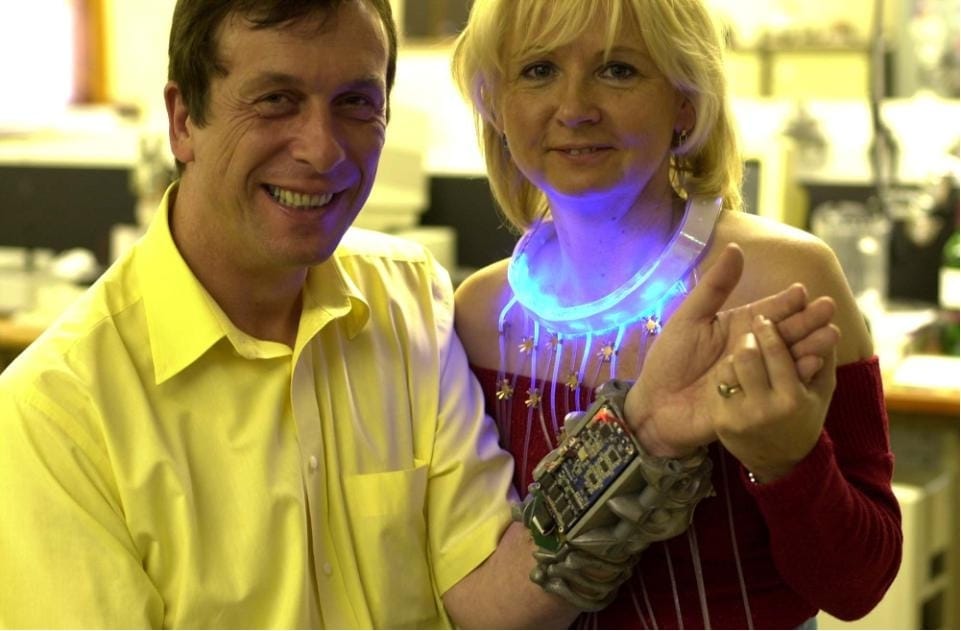‘Bionic Skin’ could give robots the sense of touch
Sophie Protheroe discusses how robots are becoming increasingly humanoid, and how refining 3D printing is creating endless opportunities for new innovative technology

As we are entering an age where robots are becoming more human, so are humans becoming increasingly attached to technology. Scientists have created a 3D printed ‘bionic skin’ which could give robots the sense of touch. This is a major step towards printing electronics onto human skin. Cyborgs, part human part machine, are no longer confined to science fiction.
Researchers at the University of Minnesota have developed a revolutionary process for making stretchable electronic sensory devices using a unique, custom-built 3D printer. “A 3D printer is typically used to print hard plastic objects – we want to go beyond hard plastics to the realm of functional materials and devices, such as electronic and biological materials,” explains lead researcher Michael McAlpine, an associate professor of mechanical engineering.
So far, the scientists have printed 3D touch sensors onto a model hand. The next step is to integrate these into robots to give them a sense of touch. “You could integrate it into surgical robots. Instead of just observing the surgical tools on a monitor, you could actually give doctors a sense of touch, allowing them to do more accurate surgery,” says McAlpine.
The researchers also integrated a 3D printed sensory device onto real human skin and found that it was sensitive enough to measure pulse. This paves the way for 3D printing wearable health monitoring devices.
3D printed electronic devices could become “the tattoos of the 21st century”, says Andy Miah, a fellow of the Institute for Ethics and Emerging Technologies, USA. Yet Miah is sceptical about their usefulness for daily life. “Having something stuck to you on a permanent basis would be quite limiting,” he says. However, there is more work to be done before devices can be 3D printed directly onto the human body. “One of the key things in being able to print on a real human hand is being able to track the small movements of the hand,” explains McAlpine. “We’re developing algorithms now that can track motion; I think we’re close to being able to put this 3D printing device to practical use and we’re pretty excited about it,” he says.
The researchers say the possible uses for 3D printed devices are endless. They could be used by soldiers in the field to detect dangerous chemicals or explosives. They could be used to develop new therapies for people who have lost their sense of touch, such as leprosy sufferers.
“People wear smart watches on their wrist now and that gives them extra capabilities – you have the whole world’s information on your wrist,” says McAlpine. “Taking that a step further and integrating other types of devices directly on your body to achieve super-human capabilities, it’s not really so science fiction anymore,” he says.
Kevin Warwick, former Professor of Cybernetics at the University of Reading, supports the idea of enhancing human capabilities using technology. Warwick became the world’s first cyborg when, in 1998, he implanted a microchip under the skin of his forearm which enabled him to remotely control devices in the room. Since then, he has been disappointed that other scientists have been reluctant to experiment with electronic implants. “Printing on top of the skin [as opposed to implanting under the skin] reduces the chance of potential medical problems and I do see it as an excellent, practical way forward for getting more people involved,” he says.
The integration of technological devices with the human body is set to become more accessible in the future. Perhaps you’ll be able to become a cyborg at the local tattoo parlour. Maybe you’ll even be able to do it yourself. “You could take this tool with you, put a 3D printer in your backpack and print all kinds of cool 3D objects,” says McAlpine.









